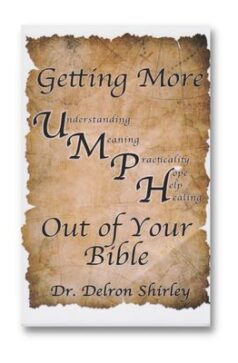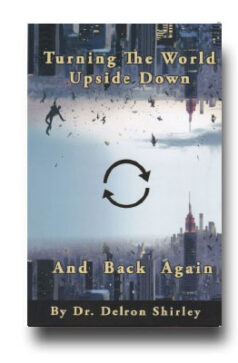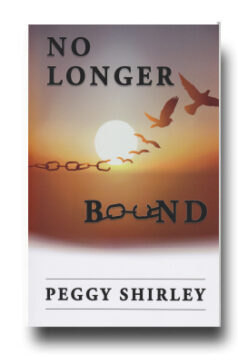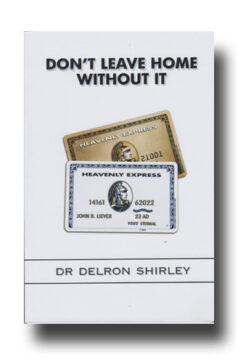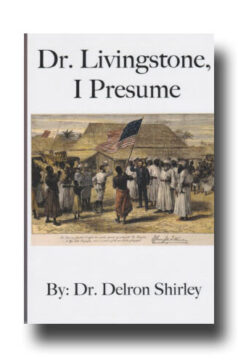To really understand the resurrection, we need to fully comprehend the crucifixion that led up to it. The Apostle Paul was so adamant that we needed to fully understand what happened on Good Friday that he declared his intent to know nothing except Christ and Him crucified (I Corinthians 2:2) and to be made totally conformable to His death (Philippians 3:10).
One of the most powerful tools in modern history to help us comprehend the horror of the cross was the 2004 movie, The Passion of the Christ. When I first heard of Mel Gibson’s plan to produce the movie, I began following with avid interest every news article I could find about the film, and I wasted no time in getting to the theater to see it as soon as it was released. I knew that Mr. Gibson took a lot of criticism over the production, with the basic accusations being that the film is violent and full of hatred rather than being a story of the teacher of love, not historically accurate, and anti-Semitic.
Certainly, the film was violent. Any accurate depiction of the crucifixion would have to be violent. I personally believe that Jesus’ agony was the most violent moment in all of human history. It was the focal point of all the devil’s hatred in which he released every ounce of his hostility toward God and man, focusing it all on one central figure — Jesus of Nazareth. We have lived too many centuries with an innocuous image of the cross. The paintings we see show Jesus with a few drops of blood on His hands, feet, and brow and a smile on His face. I remember hearing one artist tell of how he had painted the fists of the Savior clinched around the heads of the nails but went back and repainted the hands with the fingers opened because he couldn’t believe that Jesus was actually enduring pain. But with this movie, Mel Gibson finally came forward to depict the cross in all the reality of the violence of the event.
Having seen Mel Gibson in the execution scene of Braveheart, I thought that I was prepared for the realistic portrayal he was to give in this movie. Man, was I ever wrong! I can honestly say that this was the most emotionally draining experience I have ever endured. I couldn’t keep my eyes on the screen during much of the flogging and crucifixion. The movie made Isaiah 53:3, “We hid our faces from Him,” a reality for me. I tore a fistful of napkins to shreds as I wrung my hands throughout the agonizing drama. I remember thinking that finally I was going to get a little relief when I saw the soldiers begin to unchain Jesus from the whipping post — only to find that they were simply turning Him over so they could lash Him across the chest!
Yes, it is a film about violence and hatred; however, throughout the film Jesus is continually shown as the man of love who could pray that the Father would forgive His executioners — no matter how violent and full of hatred they might be. My guess is that the critics who saw only violence were blinded to the rest because they just didn’t want to let their own sinfulness and hatred toward God be exposed. They love darkness and want to remain in it because their deeds are evil. (John 3:19)
Some of the movie critics have said that the screenplay is not historically accurate; however, after having spent years studying the Bible and the history of the time, I concur with the Pope’s analysis, “The way it is is the way it was.” Other than a few character roles added to carry the plot of the story, everything was historically accurate — down to the scene where the crow ate the malefactor’s eyeball. Although we don’t know that it happened to this particular individual, we do know that many times the jackals and vultures started eating the flesh of crucifixion victims while they lingered between life and death on their crosses. And the first morsel that the birds of prey go for is the eyeball!
The most vocalized criticism is that the movie is anti-Semitic. However, the plot follows history accurately depicting exactly what part the Romans played and what the Jews had to do with Jesus’ death. In a pre-release airing of the film among some of the leading figures in Washington, DC, the question of whether the film had an anti-Jewish tone was asked at the conclusion of the film. For a very long moment, no one responded to the inquiry, “Who killed Jesus?” Finally, one brave soul spoke out, “It was my sins that put Him on that cross!” That is exactly what Mel Gibson portrayed. Even before the first character graces the stage, the audience is forearmed with the message of the film as the words of Isaiah are scrolled across the screen: “But he was wounded for our transgressions, he was bruised for our iniquities: the chastisement of our peace was upon him; and with his stripes we are healed.” (Isaiah 53:5) In a major headline USA TODAY quoted Mel Gibson as saying, “If I were Billy Graham, I would preach.” Well, he did! That one quote proclaimed the message of the cross; it is not against the Jews or the Romans — but against the sinfulness that has enslaved us all: Jews, Romans, Americans…
A number of years ago, I taught a very descriptive lesson on what historical records tell us about crucifixion. One of the students who heard the message related a story the next day to describe the impact it had had upon him. After class, he left for his job as a truck driver. En route to Chicago, he was pulled over by a highway patrol who wanted to know why he was driving so slowly; his rig was obstructing traffic on the busy highway. When my student responded that he had to drive slowly because it was raining so hard, the officer look at him with a really funny expression and retorted, “It’s a perfectly clear day. What are you talking about?” My student’s response was that he was not talking about outside rain but the rain inside his cab where he was weeping uncontrollably. When he explained to the policeman that he was just reviewing the lesson he had learned that day about the cross of Christ, the patrolman waved him on. The unbelievable part of the story is that the same officer stopped him again on his return trip and again found him with tears running down his cheeks. If the verbal description can have this kind of effect, you can only imagine how dramatically the visual presentation impacts the viewers. My wife was so awe-struck that she couldn’t move out of her seat after the viewing. I had to ask her to leave the room so the cleaning crew could vacuum under our chairs.
“And I, brethren, when I came to you, came not with excellency of speech or of wisdom, declaring unto you the testimony of God. For I determined not to know any thing among you, save Jesus Christ, and him crucified.” (I Corinthians 2:1-2) Paul said that he determined to focus his ministry on the cross. If he wanted people to see the cross, it must have something to say. Paul was probably the most eloquent man who ever proclaimed the gospel of Jesus — or any other message for that matter. He was trained in the best institutions which money could avail in the first century. He was the private pupil of Gamaliel — a rabbi who is honored even today as one of the ten most brilliant teachers of Judaism of all times. Paul had the authority of the Romans, the culture of the Greeks, and the heritage of the Jews converging inside him to make him superior on any playing field, yet he knew that there was still one more factor inside him which outweighed them all — the revelation of the cross of Christ!
I don’t believe that very many Christians of any background have ever totally realized what our Savior endured when He submitted Himself to death on the cross. We have all seen too many movies, Passion plays, paintings, and statues that depict the event without the true drama. We have come to believe that the cross was far less than it really was. Our paintings show a few little spots of blood around the points where the nails and the thorns penetrated the flesh of our Messiah. He is usually depicted with a smile, or at least, a tranquil expression on His face. However, the scriptures and history paint a dramatically different portrait of a man on the crucifixion tree. The prophets tell us that His visage, or facial features, was marred beyond that of any man and that there was nothing about Him that would cause us to want to look at Him — in fact, we would want to turn our heads away in awe and disgust. (Isaiah 52:14) He was so disfigured that we couldn’t believe that we were really seeing a human being, not a piece of meat from the slaughter house. His beard was yanked from his face. We all know how it smarts to even ever-so-gingerly pull off a bandage which extracts a few hairs in the process, but just imagine how agonizing it must have been when the soldiers grabbed handfuls of Jesus’ beard and jerked then out, yanking out large hunks of flesh along with them. (Isaiah 50:6)
Crucifixion was only the last step in an intensely cruel execution process. Jesus’ agony actually began the evening before when He struggled for three solid hours with the challenge of facing the cross. Even though Jesus had consented to the crucifixion plan before the foundation of the earth (Revelation 13:8) — when the time for actually going to the cross drew near, He reacted the same as any other human being would have done. Anything else would have betrayed His humanity. Since He was every bit as mortal as you or I, every nerve ending in His body was as sensitive as those in any other human’s body. He knew that the pain that awaited Him was going to be real and that it would be of an intensity that would defy description. Jesus, who had lived every moment of His human life in total relationship with the Heavenly Father, took three full hours to come to the place to submit Himself to this one aspect of the Father’s plan; this proves the agony that was to come. If the cross was as photogenic as we see it portrayed, Jesus would not have been so resistant to accepting it. But it took three hours of travail in which Jesus longed for the human support that had failed Him and finally had to be succored by angelic nurturers. So intense was His struggle, the capillaries in His forehead burst and allowed blood to ooze through His skin mixing with the perspiration pouring from his brow. The garden where He prayed was called Gethsemane after an olive press that was there. How symbolic of the pressing, tearing, and grinding which Jesus endured there, resulting in the squeezing out of His life’s blood just as the oil was squeezed out of the olives in the press. At last, the triumph came when Jesus could victoriously yield with the memorable words, “Not my will, but thine be done.”
Next came the arrest and interrogation and finally the trial before Pilate. This Roman governor had a reputation in Israel for being somewhat of a coward in that he had fairly readily withdrawn his troops after the Jewish leaders had shown a unified resistance as the Roman soldiers had tried to mount certain pagan symbols in Jerusalem. At first, he had ordered his men to draw their swords, but when the Orthodox bared their necks indicating that they were willing to die for their beliefs, he reluctantly tucked his tail and recognized that he had met his match. The trial of Jesus was to be round two in the ongoing match between the procurator and the “cloth.” Pilate, immediately recognizing that the accused was faultless, set out to have him released. Since no crime against Roman law could be cited, he tried to dismiss the case. The people pressed, and he yielded by allowing Jesus to be beaten.
It is likely that we will never totally comprehend the horror of the Roman whipping post. Here, a man was stripped and tied down so that the officers would have full exposure to his back. Their whips were leather thongs with sharp bits of metal, bone, or glass imbedded so that they would not just lash but also claw the flesh of the victim. With a skilled twist of the wrist as the lash struck the victim’s back, the barb would embed in the flesh and plow across the back leaving a furrow like a plowed field. Hunks of flesh were torn from the back and blood gushed uncontrollably. History records that in some cases the internal organs were actually visible through the gasping holes left by the Roman lash. Some men never made it to their crucifixions, having died from the injuries inflicted at the whipping post. Pilate’s hope was that he could show the crowd this bloody pulp of a man and satisfy their blood thirst. But the mob, likely remembering how they had previously forced the governor’s hand, insisted on crucifixion.
Like piranhas or sharks in a feeding frenzy, the sight of blood only incensed them. Crowning Jesus with a crown made of a Judean bush which sports thorns of over two inches, it is certain that they inflicted more than mere flesh wounds in the brow of our Lord. Next, they thrust upon Him the cross He was to bear to Golgotha. Normally, we see this scene depicted with the Master carrying the full cross; however, the more accurate historical likelihood is that He carried only the patibulum, the crossbeam. Yet He fell under the weight of just the cross beam, and the executioners had to force Simon the Cyrene to carry it to Calvary. We must remember that Jesus was a muscular and viral man in the prime of life who had spent His earlier years working in manual labor in His father’s carpenter shop and his last years traveling by foot through the rugged terrain of the near-desert Middle East. The beating He had endured had so weakened this strong man that he couldn’t even carry the patibulum — much less a full cross. Finally at the Place of the Skull, Jesus was nailed to the tree of execution. Giant spikes ripped through His hands and feet, and then the cross was lifted into place and dropped into position in its support hole. The jar of lifting the cross to a vertical position and allowing gravity to yank it into the hole followed by the reverberation of the thud as the cross hit the bottom of the hole and came to a sudden jerking halt tore violently at the flesh around each nail hole. Writhing pains shot throughout His body. Jesus was offered wine mixed with myrrh to deaden His senses to relieve the pain, but He refused (Matthew 27:34); the issue of enduring had been settled the evening before at the Rock of Agony in Gethsemane’s garden.
Some archeological evidence points to the fact that crosses of Jesus’ time were equipped with a seat which was actually a protrusion which would literally impel the victim unless he pulled himself away from its sharp point. Thus, the victim had to support himself by pulling up with his arms and pushing down with his legs, causing even more tearing of the flesh around the spikes. In addition to trying to avoid being impelled by the seat, the victim had to continually keep his arm muscles from relaxing in order to relieve the pull of the chest muscles that would actually collapse his lungs and cause him to die of asphyxiation. Death on a cross was usually a long drawn-out process; some men were reported to have survived for several days on the cross, finally dying of exposure or dehydration. As we have already noted, some crucifixion subjects became targets for vultures and other scavengers that actually began to eat their flesh while life still lingered.
In all this, I see the ultimate depravity of man. For a human being to ever think of such cruel and inhumane ways of torturing another human soul is unimaginable. Worse is the realization that those in charge had become so callous that they laughed and made a mockery of Jesus as they executed their gory task. (Luke 23:36) The crowd sat down to watch and to jeer at this helpless subject of diabolic cruelty. The executioners gambled for His clothing while Jesus hang gasping for breath. Even worse is the thought that two men who were enduring the same agonizing execution joined in on the mocking of the Savior. How could someone going through such extreme pain want to use his precious breath and energy to scorn another victim? How could the crowd see the bloodied prisoner after the scourging and still beg for more? How could Pilate turn over a man he knew to be innocent to a lynch mob who was determined to do such an unthinkable thing to Him? There is only one answer: mankind is totally depraved!
The second thing I see when I survey that wondrous cross is the great love of God. As we have already mentioned, Jesus was the Lamb slain before the foundation of the earth. That means that at some point before the Trinity made the decision to create the universe and place a planet called Earth into orbit and then populate that planet with a species called man, they met together in divine council and came to a total agreement concerning a plan of redemption for man’s inevitable fall. That plan consummated the total scope of God’s sacrifice. The Father would have to release His most beloved possession — His only begotten Son — to be humiliated, beaten, and executed; meanwhile, the Father would have to stand back without intervening to rescue Him. The Son would go through the ultimate of human suffering, inflicted by the very ones He was on mission to redeem. The Holy Spirit, with His power to convict men of their evil and the ability to comfort the sufferer, would have to deny His very nature and stand silently by as this great scenario played out. Imagine with me the creation week as God molded the features of the earth. As He sculpted the likeness of a skull into the side of a knoll in what would later be called Jerusalem, He knew what was to happen on the brow of that hill; yet, He made that hill anyway. As He spoke to the ground and told it to bring forth vegetation, He saw the first sprout of the family of trees that would eventually become execution trees; yet, He did not uproot it. As He called for animal life to inhabit the fields, he observed the first bull that would sire the bloodline of cattle that would provide the leather for the thongs of Roman whips; yet, He allowed it to mate and reproduce. As He planted His garden east in Eden, He knew exactly what would take place under the fruitful boughs of the Tree of the Knowledge of Good and Evil; yet He allowed it to sprout any way. This was love at its greatest: God set up all the dominos knowing how they must fall. He made Himself totally vulnerable in order to love and redeem a race of men that He could have left uncreated! Relentlessly determined that the plan be fulfilled, He intervened in every strata of society and at every crisis point in history to see that all was on target for the day He would consummate His great love and initiate the Golden Text of the faith: “For God so loved the world, that he gave his only begotten Son, that whosoever believeth in him should not perish, but have everlasting life.” (John 3:16)
Jesus made the great love of the Godhead tangible and visible when He abdicated His position in the throne room of heaven to become one of us and submitted Himself to the agony of the cross.
In the beginning was the Word, and the Word was with God, and the Word was God…And the Word was made flesh, and dwelt among us, (and we beheld his glory, the glory as of the only begotten of the Father,) full of grace and truth. (John 1:1, 14)
Who, being in the form of God, thought it not robbery to be equal with God: But made himself of no reputation, and took upon him the form of a servant, and was made in the likeness of men: And being found in fashion as a man, he humbled himself, and became obedient unto death, even the death of the cross. (Philippians 2:6-8)
Looking unto Jesus the author and finisher of our faith; who for the joy that was set before him endured the cross, despising the shame, and is set down at the right hand of the throne of God. (Hebrews 12:2)
At the cross we see this so clearly when we observe the determination with which He fulfilled His mission. In spite of His personal pain, He focused on mankind’s needs — not His own. Mustering up enough breath to stay alive would seem to be His main focus, but Jesus continued to use His waning energy and precious breath to minister to a world that was closer to spiritual death than He was to physical death. It may have been a barely audible whisper, but I suspect that it was hardly short of a bellow when He proclaimed, “Father, forgive them; for they know not what they do.” (Luke 23:34) Unconcerned for His treasured breath, He expended Himself for us! As one of the malefactors who had, according to Matthew 27:44, thrown ridicule into Jesus’ teeth had a change of heart, Jesus again abandoned His struggle for His own breath to vocalize a promise of eternity and salvation to him. Paul described this great love which was manifest at the cross in Romans 5:10, “For if, when we were enemies, we were reconciled to God by the death of his Son, much more, being reconciled, we shall be saved by his life.”
The redemptive work of the cross totally eradicates sin, guilt, and bondage. The old sacrifice system provided a ceremonial way of dealing with error, but it stopped short of eradicating the fault of its temporal and eternal consequences.
For if the blood of bulls and of goats, and the ashes of an heifer sprinkling the unclean, sanctifieth to the purifying of the flesh: How much more shall the blood of Christ, who through the eternal Spirit offered himself without spot to God, purge your conscience from dead works to serve the living God? (Hebrews 9:14)
From the cross, Jesus asked the Father for a blanket forgiveness for man’s sinfulness. When Paul experienced the redemptive work of the cross, he testified, “But God forbid that I should glory, save in the cross of our Lord Jesus Christ, by whom the world is crucified unto me, and I unto the world…I am crucified with Christ: nevertheless I live; yet not I, but Christ liveth in me: and the life which I now live in the flesh I live by the faith of the Son of God, who loved me, and gave himself for me.” (Galatians 6:14, 2:20) The cross freed him from the world’s guilt system and his old sinful self. Because of the cross, Paul could say that he had a new source of life within himself. The Apostle Peter echoed Paul’s revelation when he wrote, “Who his own self bare our sins in his own body on the tree, that we, being dead to sins, should live unto righteousness: by whose stripes ye were healed.” (I Peter 2:24) John shared his comprehension of this truth in his vision from Patmos, “These are they which came out of great tribulation, and have washed their robes, and made them white in the blood of the Lamb.” (Revelation 7:14) At the cross, I see the ultimate redemption which covers any and every sin, no matter how great or small; I see a redemption which really works, conquering the penalty, guilt, and nature of sin as well as just dealing with the act of sin.
Jesus prophesied that His cross would have a universal impact, “And I, if I be lifted up from the earth, will draw all men unto me.” (John 12:32) It was not just the few people who actually nailed Him to the tree, or who plucked out His beard, or who spat on Him and blasphemed Him, or who wielded the cruel whip for whom He prayed that the Father would forgive. It was all men for whom He went to the cross.
On that cross, there was a bold proclamation in all the major languages of the time. (Luke 23:38) Anyone who would have passed by the crucifixion grounds would have readily been able to identify the man and His mission. The cross, standing on the Damascus Road just outside the major gate to the city of Jerusalem, was in the most prominent place with the highest traffic volume in the vicinity. The amazement with which the disciples on the road to Emmaus questioned if Jesus were a stranger in the region since He seemed to have not heard about the cross testifies to the effectiveness of the universal proclamation of that cross. (Luke 24:18) As if a declaration to all men, the cross dominated the crossroads of commerce, military movement, religious pilgrimages, and everyday living. In the cross, I see that the crucifixion was not just a glimmer of hope to one sect or sector; it was a great beacon of salvation to the whole world. At the cross not only do I see God’s deliberate attempt to reach the whole of humankind, but I also sense the command which was to come after the cross had yielded to the resurrection.
Go ye therefore, and teach all nations, baptizing them in the name of the Father, and of the Son, and of the Holy Ghost: Teaching them to observe all things whatsoever I have commanded you: and, lo, I am with you alway, even unto the end of the world. Amen. (Matthew 28:19-20)



